The Fujie E-Traverse Classic + is a sporty hybrid that would work well in a wide range of conditions and environments… mostly urban, with some hard packed trail or gravel adventures in between. It comes with a blended tire that feels smooth on pavement but offers enough grip to perform on dusty and semi-loose terrain, and the tires are right in between efficient narrow and wide comfort. This is an ebike that is sold in an impressive eight different frame sizes, between the traditional diamond high-step and more approachable, but still sporty and stiff, mid-step. It uses a very proven drive system from Bosch but opts for the less expensive, less zippy configuration, that can extend range and will produce less noise. For me personally, there’s nothing especially exciting or novel about this electric bicycle… but it’s very solid in terms of the components used, like the 9-speed Shimano Deore cassette and derailleur and the Tektro hydraulic disc brakes. It comes almost feature-complete, meaning you really don’t have to buy extras in order to use it in the rain or at night. I say almost, because the one thing it is lacking is a rear rack. However, the frame has threaded eyelets on the seat stays so you could easily attach your own aftermarket. The downside here is that you have to pay extra for a rack, adjust it to fit perfectly, and then try to relocate the rear light or get an additional independent light to use at the rear of the rack because a left pannier might block the existing light. I love that Fuji includes lights at all, and the fenders are great, and the mini chain guard is fantastic. The one thing that really feels like an oversight is the lack of bottle cage bosses. There is clearly room for them on the larger high-step frames as shown in the images and video review above. Why Fuji skipped this is a mystery to me because everyone needs water, and many people enjoy the convenience of bringing a folding lock or a mini pump without buying a saddle bag or wearing a backpack. This review is going up a little bit late in the 2017 season and Fuji is refining their models for 2018 and beyond. They weren’t super responsive when I reached out about partnering for this review (I request that companies help to fund my travel and hotels to keep this review site possible and I prioritize the work for companies that do).
The motor on this bike is a first generation Bosch Active Line that looks very similar to the Bosch Performance Line and has been completely overhauled for 2018. The new motor uses a more traditionally sized chainring, doing away with the 2.5x reduction gear and smaller proprietary chainring. It’s lighter and more compact, possibly also quieter, but there’s nothing wrong with the first gen motor used here. I like how Fuji matched their silver paint and stickers to blend with the battery, display, button pad, and this motor casing. It looks good, but the motor isn’t tipped up or integrated in such a fancy way as you might see on Haibike, Bulls, and other premium ebike models. The motor measures rear wheel speed, pedal cadence, and pedal torque 1,000+ times per second. It uses software to respond and ease-off when it senses derailleur tension and thus, reduce gear mashing and drivetrain wear. The design is proven, extremely reliable, and I appreciate how it is positioned on the frame, low and center for stability. Using a mid-motor allows bicycle companies to recycle the design and parts for both wheels, preserving quick release in this case, for easier maintenance and transport. And because the E-Traverse Classic + comes with a higher-end 9-speed gearing setup, you can pedal it comfortably at a range of speeds, even unpowered. Note however, that the shifter mechanism is a bit simpler and cheaper than the derailleur and does not have two-way action on the high button.
Powering the E-Traverse is a standard Bosch Powerpack 400. It’s compact, relatively lightweight at just ~5.5 lbs, and so well thought out that the new Powerpack 500 can be swapped in, using the same mounting point on the frame! Both batteries have a hard plastic shell with integrated 5-LED charge indicator, a big rectangular loop at the top for secure lifting and carrying, and a metal ledge that interfaces with the frame mount for higher security and strength. Just like the motor, this battery pack keeps weight distributed low and center across the frame. It’s so low in fact, that you could hang the bike frame off of many car and bus racks using the top tube. I usually recommend removing batteries before lifting or transporting e-bikes to reduce weight, but weighing in at 49.3 lbs, even with all of the fenders and lights, this bike is slightly below average in terms of weight. The battery is easy to charge whether left on or taken off of the bike, and this supports many commuting situations. It’s best to store Lithium-ion batteries in cool, dry locations… but not extreme cold or heat. I find that most companies ship batteries at or just below 50% full, and I think this reduces stress on the cells and helps them to stay healthier when not in use. All things considered, this is a great battery pack even though it’s not the latest and greatest. It is one of the compromises that Fuji probably considered when trying to keep the price of the bike down (along with the spring suspension fork, smaller 160 mm disc brakes, and no rack).
Operating the E Traverse Classic Plus is comfortable and intuitive, but also very rich. Once the battery has been charged and mounted to the frame (make sure you hear it click and check that the pack is fully secure), you just press the power button on the left side of the large Bosch Intuvia display panel. It blinks to life very quickly and the grayscale LCD has a faint blue glow if you’re in dimly lit conditions. It’s always backlit, but the bicycle lights won’t turn on unless you press the light icon at the lower right corner of the display. Other buttons that are actually built into the display console are reset (which clears the trip meter) and an i button (which cycles through trip stats). You can hold reset and i to enter into the settings menu and change units, brightness, check software version etc. and the i button is duplicated on the left button pad… which is where most of the action happens! This button pad is within reach of the left grip and can be interacted with using your thumb as you simultaneously hold and brake, it doesn’t compromise your hand position. The plus and minus keys allow you to cycle through four levels of assist, or turn it completely off. In off mode, the display still tracks your speed, range, and allows you to run the lights. With the Bosch Active Line motors, I tend to arrow up to the higher levels of assist for testing and reviews, but the lower levels can still be very satisfying, produce much less noise, and will basically take the edge off of the added weight of the ebike compared to a non-electric bicycle. In the Eco and Tour lower modes, the bike can get 60+ miles if you ride on smooth packed terrain and aren’t carrying an especially heavy load or climbing lots of hills. It’s pretty amazing. And, I love that the display is removable for safe keeping, the dock can be used with the COBI smart system (which accepts mobile phones for GPS and readouts) and that the stock Intuvia has a Micro-USB port for charging your phone in addition to running the display if you want. It’s just such a great design in my opinion and the button pad feels natural and intuitive even if you cannot look down at it. You feel little clicks, you feel the rubber half-circle i button in the middle, it just works.
At the end of the day, this is a purpose-built ebike made by a company that seems to aim for mid-level value. They weren’t the first company to bring a Bosch drive system into the USA but they have made something unique and focused with the E-Traverse Classic +, it’s one of the few models I have seen with the older Active Line motor. I feel that the price is a bit high compared to the competing offerings on the market that mostly run the Bosch Performance Line Cruise motor, and I do wish that it had a rack. And, I would probably swap the existing rigid seat post with a suspension post to smooth out the longer relatively faster rides that e-bikes support. It’s nice to see that they chose rims with reinforcement eyelets, opted for tires that have puncture protection linings, and that they left walk mode enabled on the display. I was intrigued to see these bikes at Motostrano in Redwood City, California because I had not seen them anywhere else in the USA. Motostrano tends to import unique stuff from Europe and allowed me to take this model and one other Fuji out for a ride around the neighborhood. Sorry I didn’t dig too deeply into all of the readouts and settings of the Intuvia display on camera, you can see that on almost all of my other ebike reviews that use Bosch. I welcome your feedback and testimonials for this product and Fuji as a company and I wish you well :)
Pros:
- Excellent weight distribution with the centerdrive motor and downtube-mounted battery pack positioned low and center on the frame
- The Bosch Active Line motor is slightly lighter, less zippy, and more efficient than some of the Bosch Performance Line models, it should go further per charge even though this bike uses the base Powerpack 400 vs. the new Powerpack 500 which might allow the price to be lower here
- My favorite Bosch display in the US is the Intuvia because it’s removable, has an adjustable angle (to reduce glare), is large and easy to read, has an integrated Micr-USB port for charging accessories, and a remote button pad that is easy to reach and use while riding!
- It’s nice when urban oriented ebikes like this come with matching fenders and a good kickstand, even if you decide to remove them, the SKS fenders here offer great coverage (along with the plastic chain cover) and the kickstand is positioned out of the way of the left crank arm and can be extended or shortened to stabilize the bike
- This is a purpose-built electric bike with internally routed shifter, brake, and electrical cables that won’t get snagged as easily and don’t clutter up the look
- It appears that you could mount a cargo rack to the back end of this bike for use in commuting situations, I like that Fuji included the bosses here so that you have more choices of racks and end up with something more stable than a seat post mounted beam rack
- The Shimano Deore 9-speed cassette and derailleur setup here are above average and should shift crisply and stay true longer between service than what I see on a lot of other cheaper ebikes, it provides good range for climbing or hitting or exceeding the 20 mph top assisted speed, as well as climbing
- Very nice ergonomic grips that lock and won’t twist if you really bear down, I also like the oversized alloy platform pedals with grippy metal nubs vs. smaller cage style pedals or cheap plastic pedals
- Nice tires, it would great if they had reflective sidewalls but at least they come with PHALANX puncture protection lining and have a hybrid tread for maintaining traction on gravel and packed dirt trails if you like to explore short off-road sections
- The body position on this bike is a bit more active and aerodynamic with the longer stem, the frame is stiff and responsive but comes in high-step and mid-step to fit different rider body types, I like that it has suspension to sort of take the edge off since you might be leaning forward more, you could swap the rigid seat post out for a 30.9 mm suspension post like this, and you can lock the suspension out for maximum efficiency
- The bike looks good, it’s neat how they chose a grey color scheme that allows the battery pack, motor casing, and display to blend in and have chosen graphics and accents that include the frame, fork, and rims
- Both wheels have quick release skewers making them easier to remove for service, storage, or to reduce weight if you have to carry it up stairs or something (same with the battery being removable)
- The battery pack can be charged on or off the bike, has an integrated loop style handle for secure lifting and carrying, and I like that the charger delivers 4 Amps for quick filling vs. just 2 Amps on a lot of other chargers
- For those who already own a Bosch powered electric bike or just want to upgrade to the larger battery someday, both the Powerpack 400 and 500 use the same mounting interface and have the same battery casing dimensions
Cons:
- Despite there being plenty of room in the main triangle of the frame, Fuji didn’t add bottle cage bosses to the seat tube or underside of the top tube… these can be very useful for bringing fluids or attaching a folding lock or mini pump
- The first generation Bosch Active Line motors use a reduction gear like the Bosch Performance Line motors, so the chainring spins 2.5 times for every crank revolution which crates a bit of friction and drag when pedaling, it’s not much but it’s fair to count this as a con
- Priced at $2.8k, this bike is only a little bit cheaper than competing models which use the zippier Bosch Performance Line motors, it’s not as sporty or satisfying to ride but at least it comes with lots of accessories to be “feature complete”
- Minor complaint here, but the headlight is mounted to the suspension fork bridge and will bounce up and down more compared to if it was attached to the head tube or handlebars and “suspended”
Resources:
- Official Site: http://www.fujibikes.com/usa/bikes/electric/cross-terrain/e-traverse/e-traverse-classic-plus
- More Pictures: https://photos.app.goo.gl/UloNN9l0IiA6zPon2

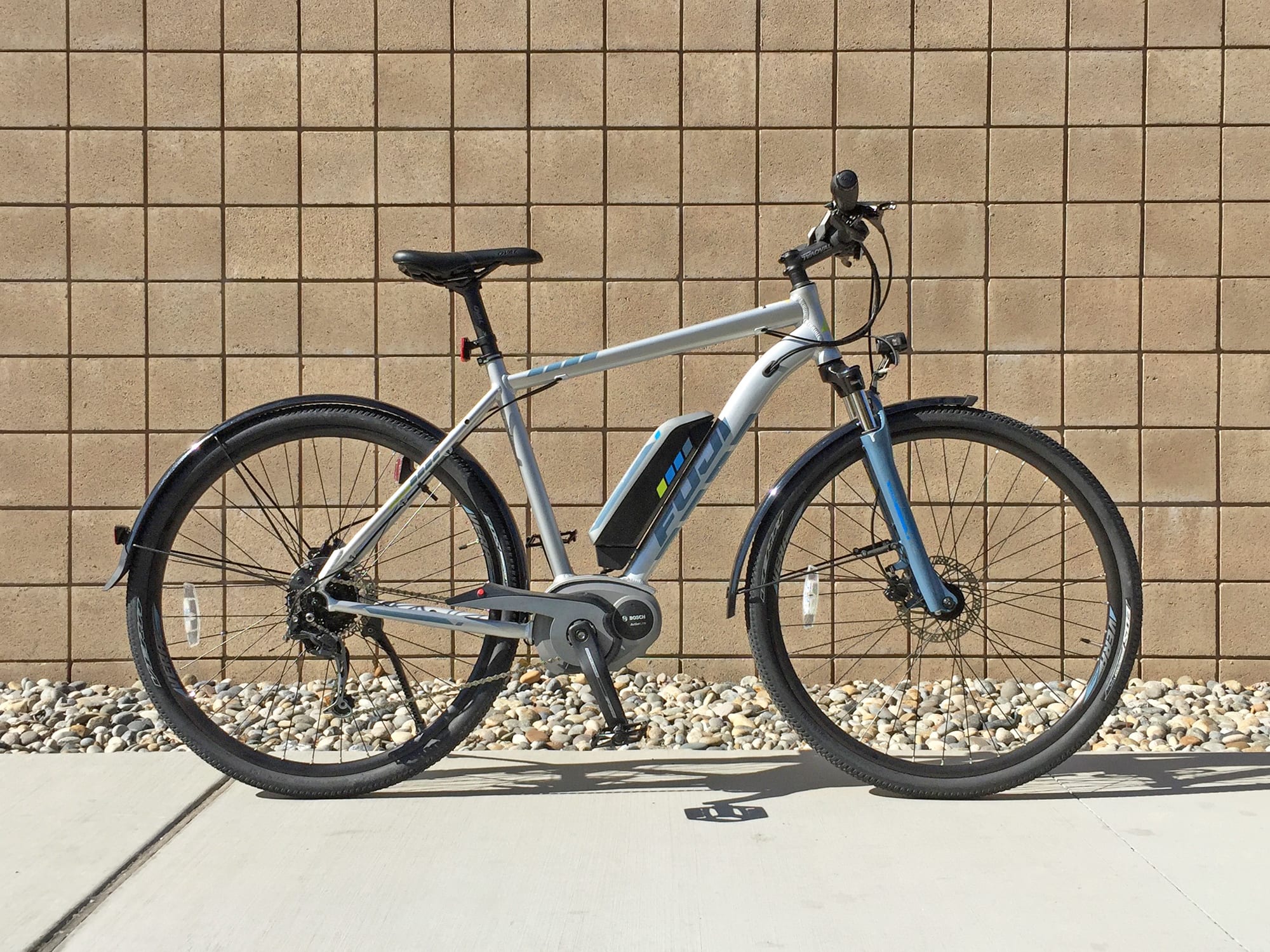
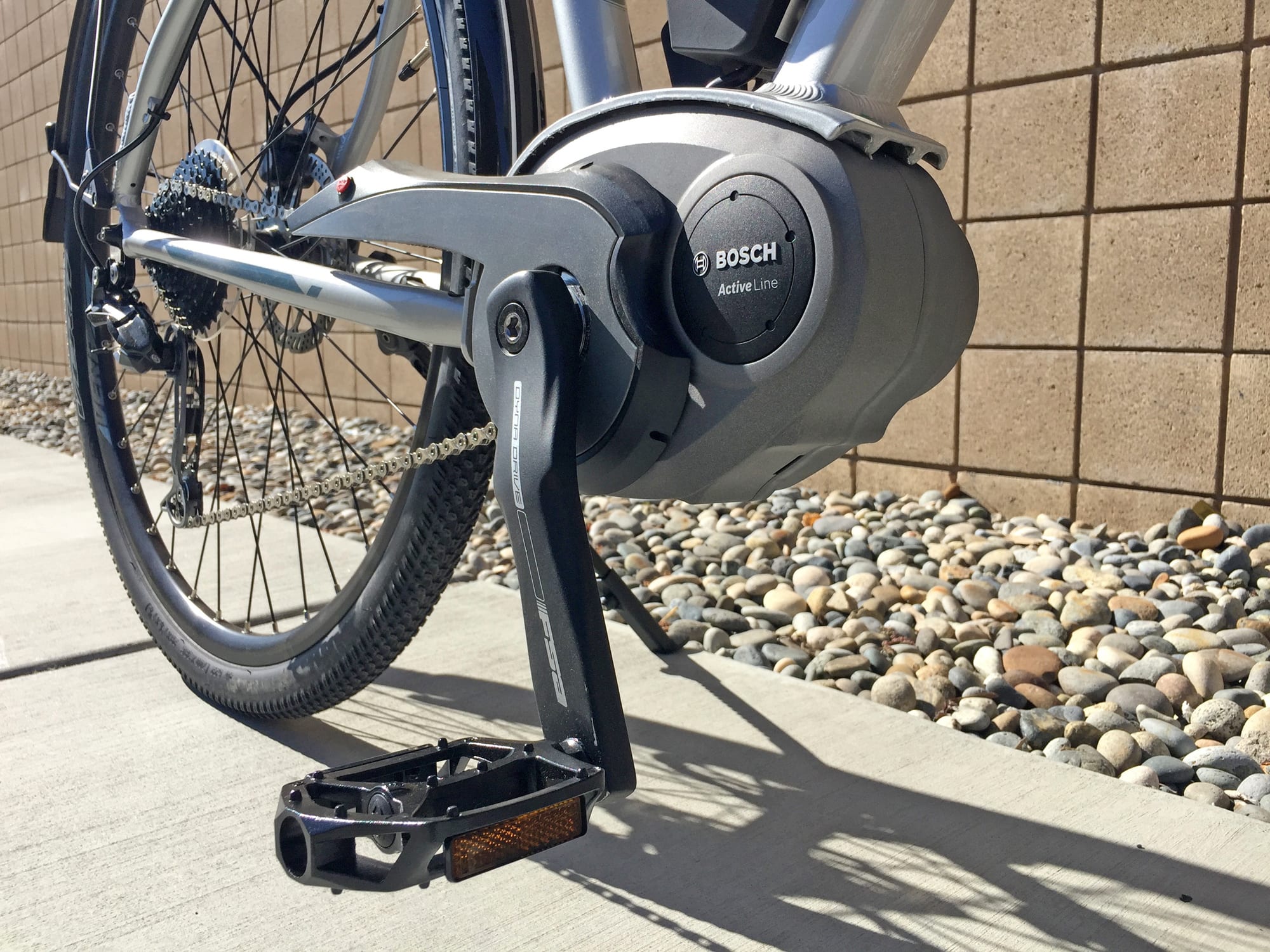
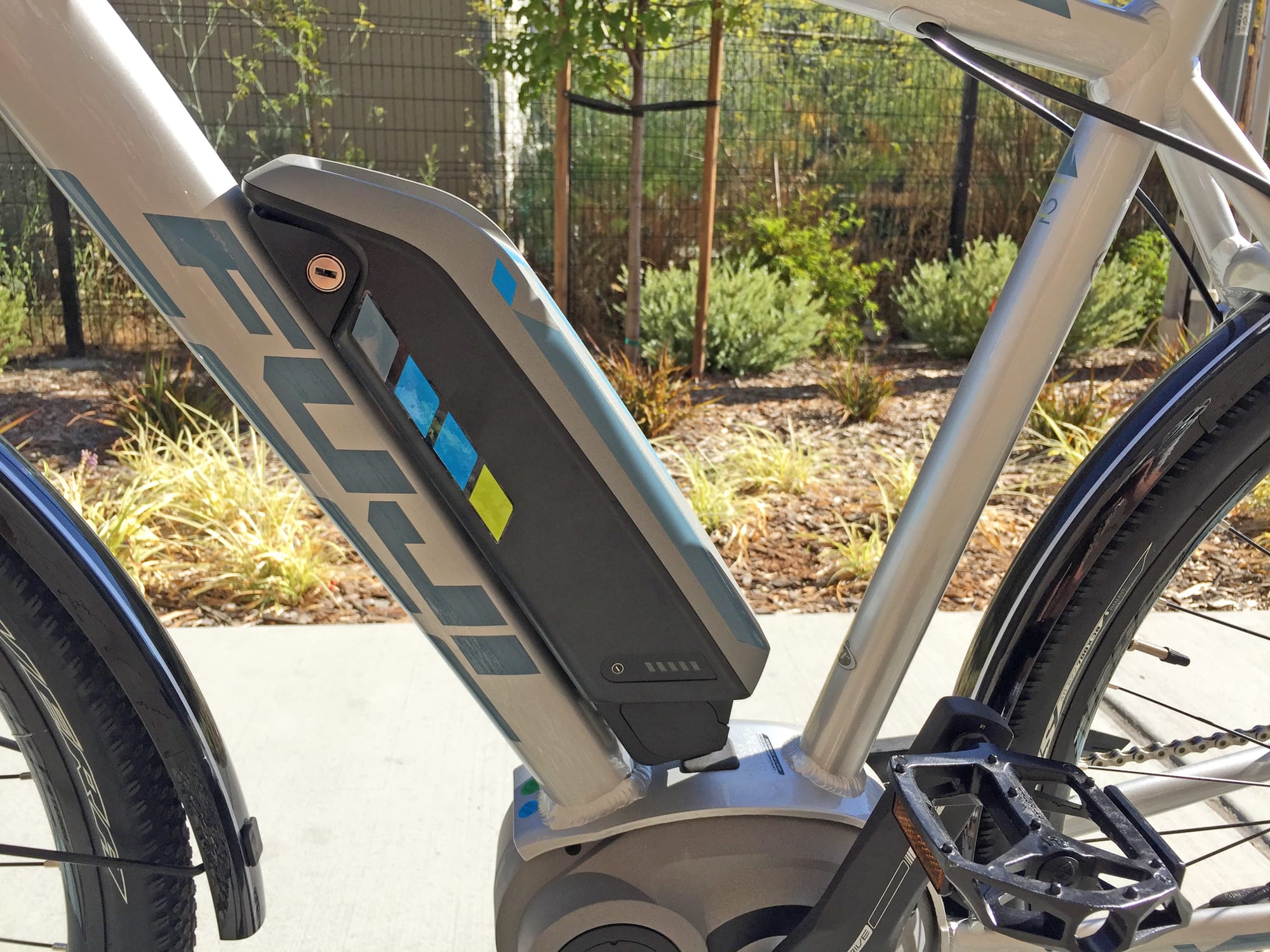
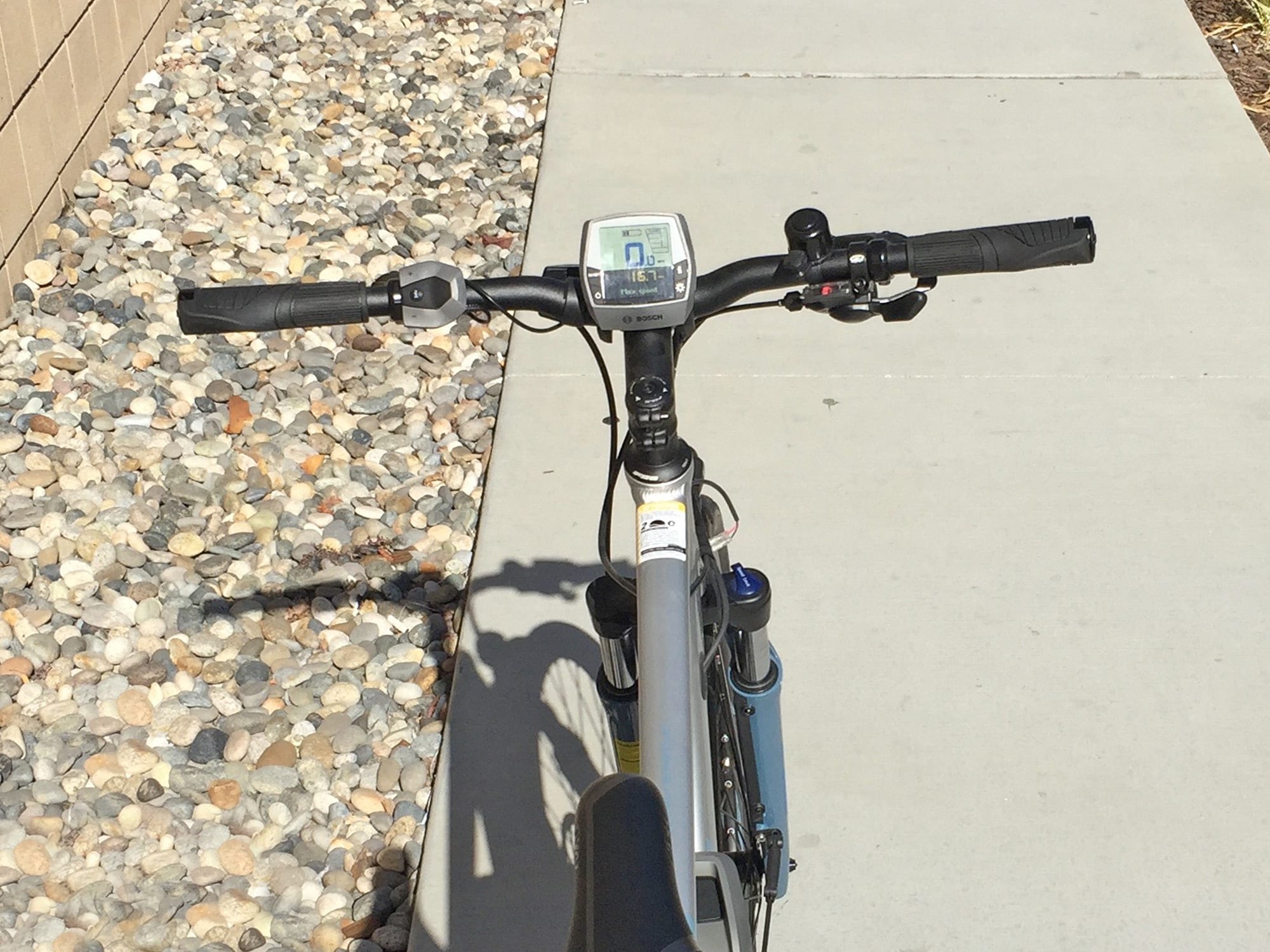
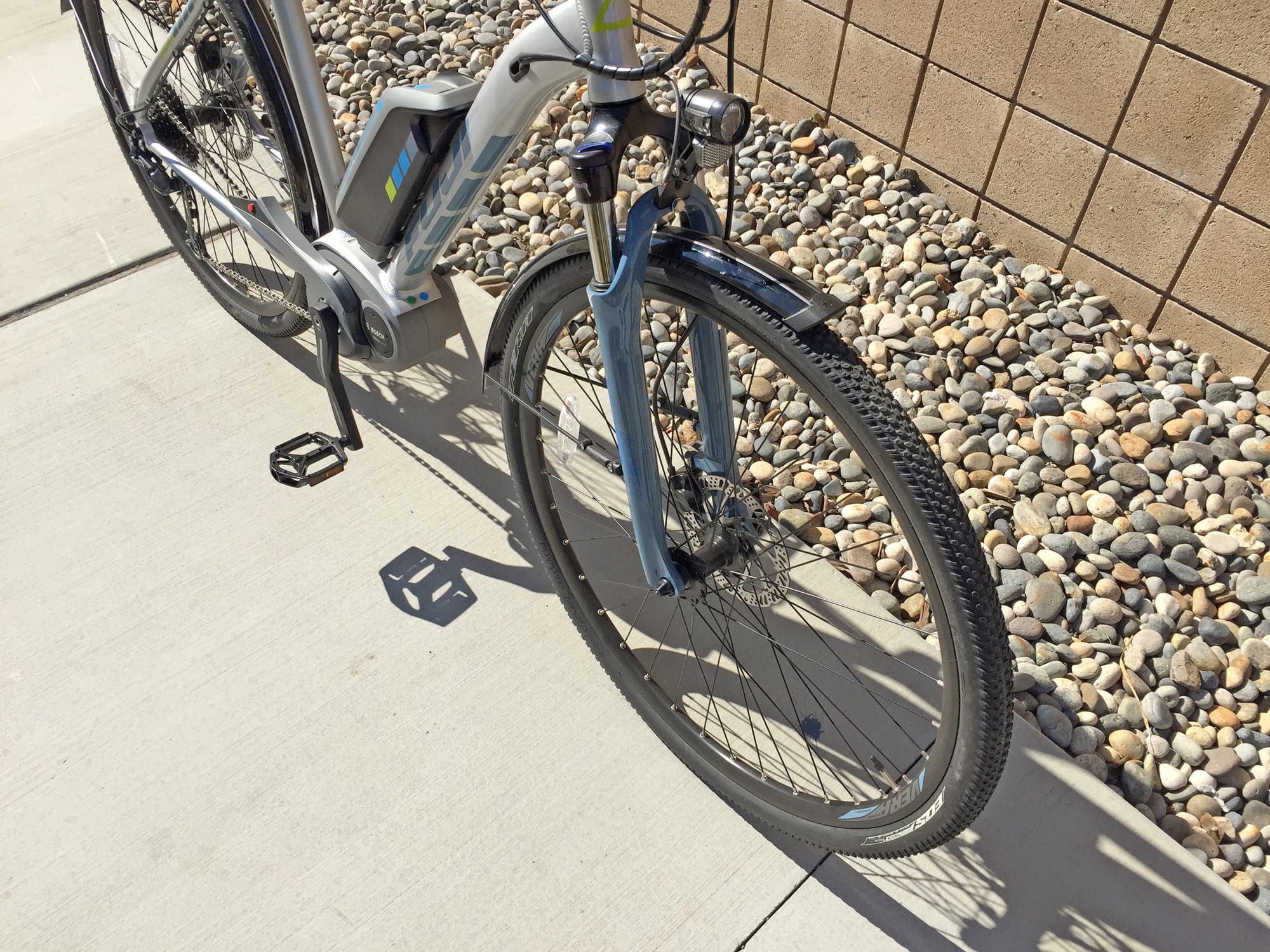
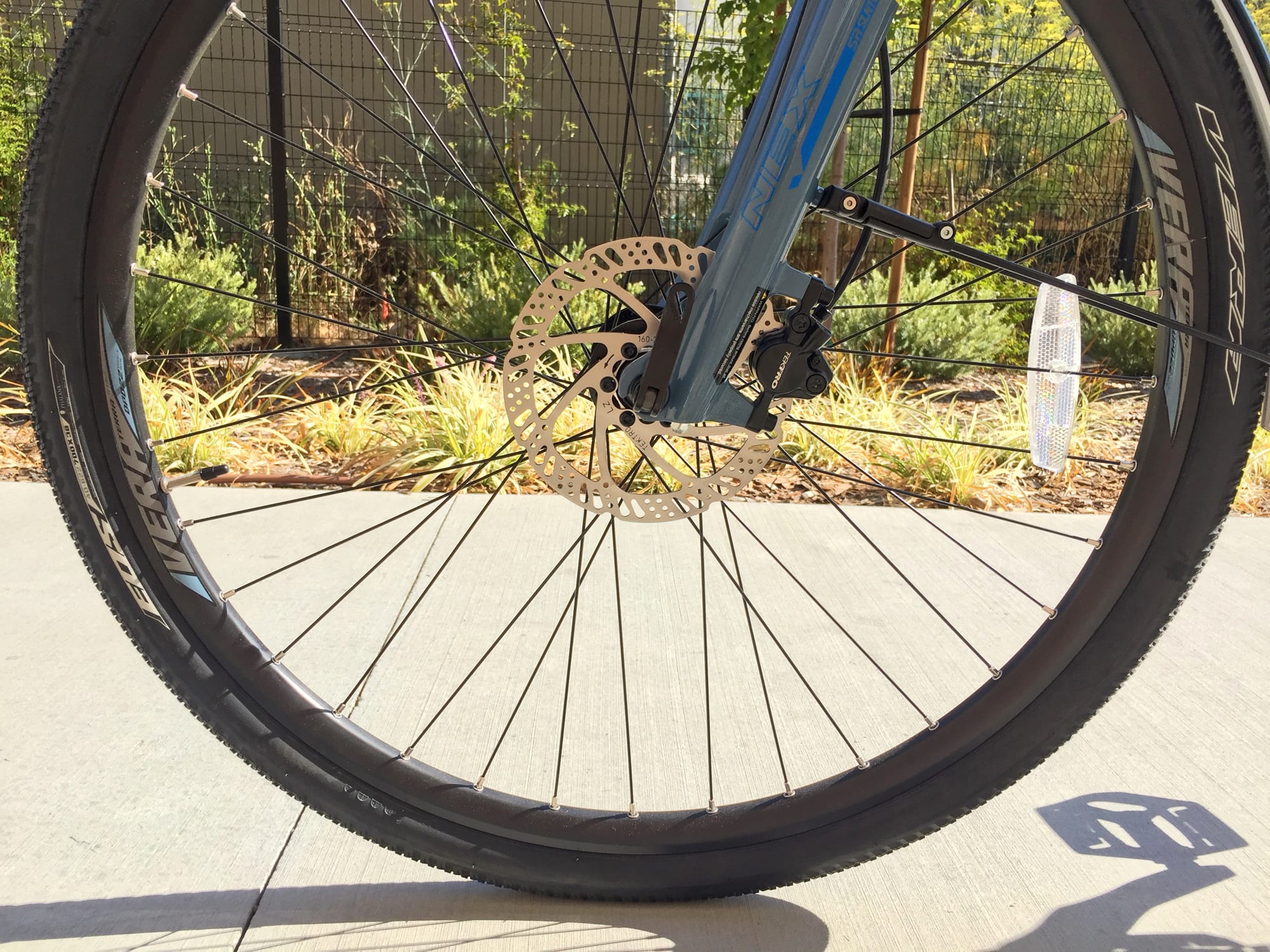

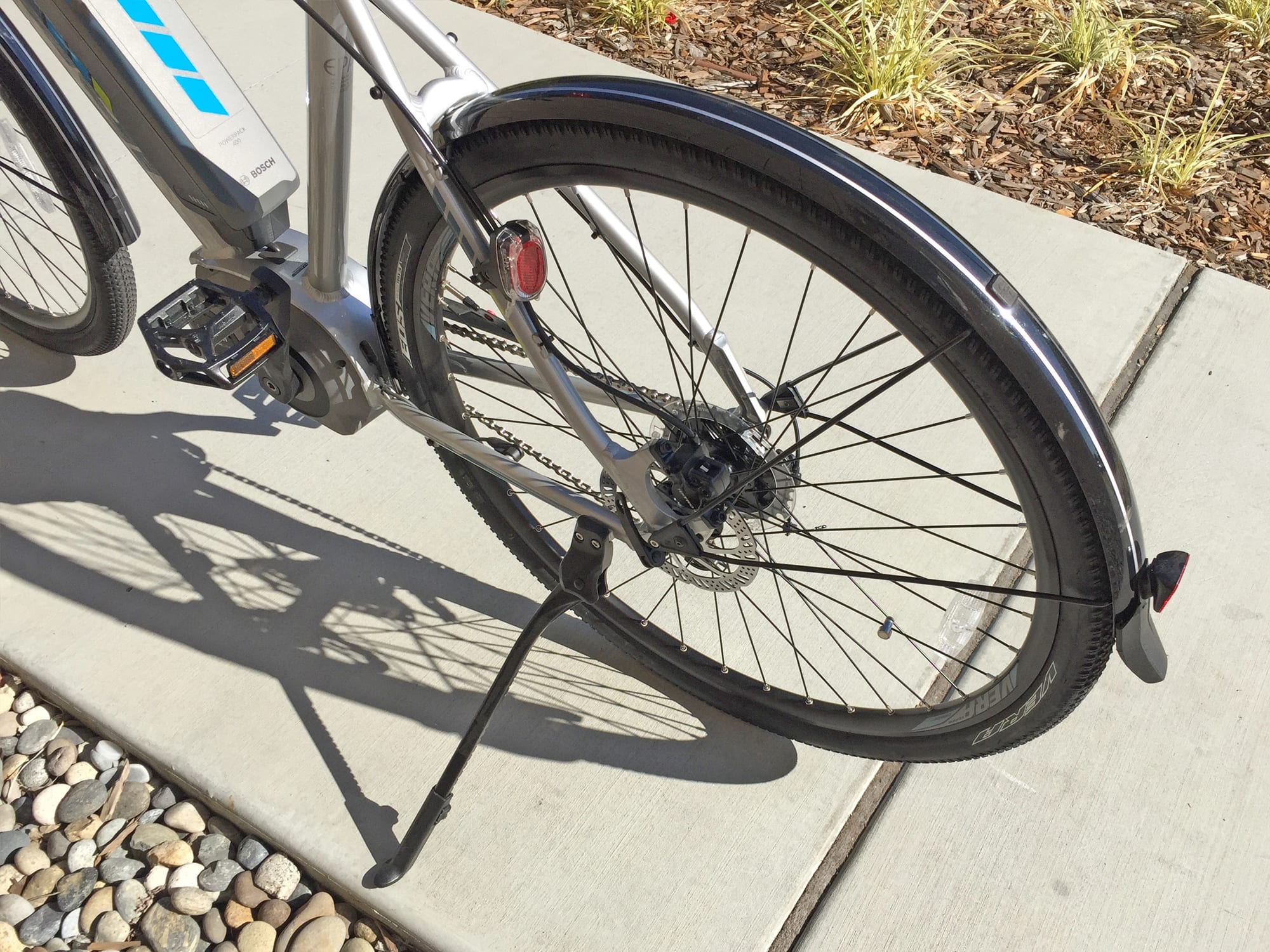
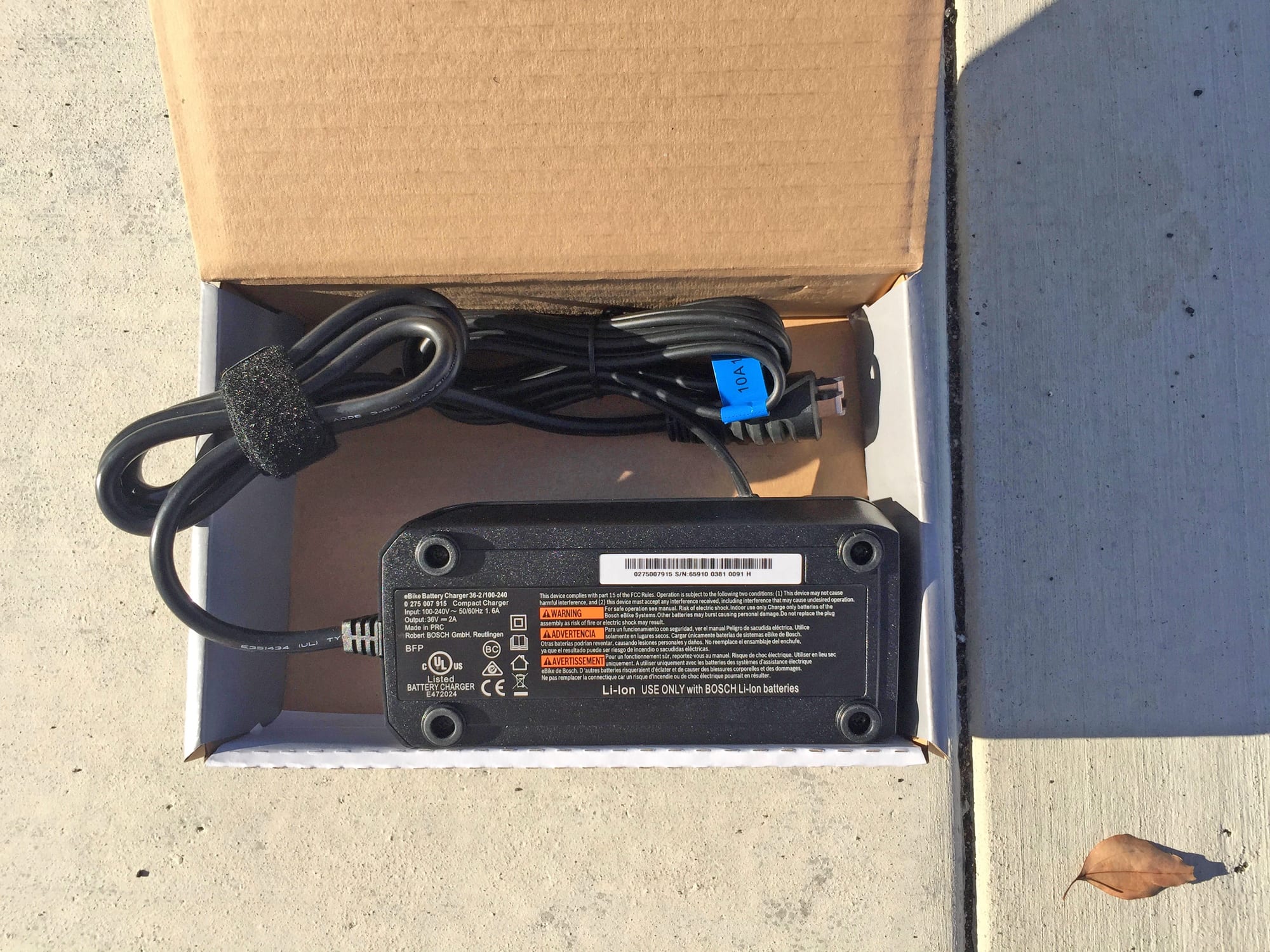
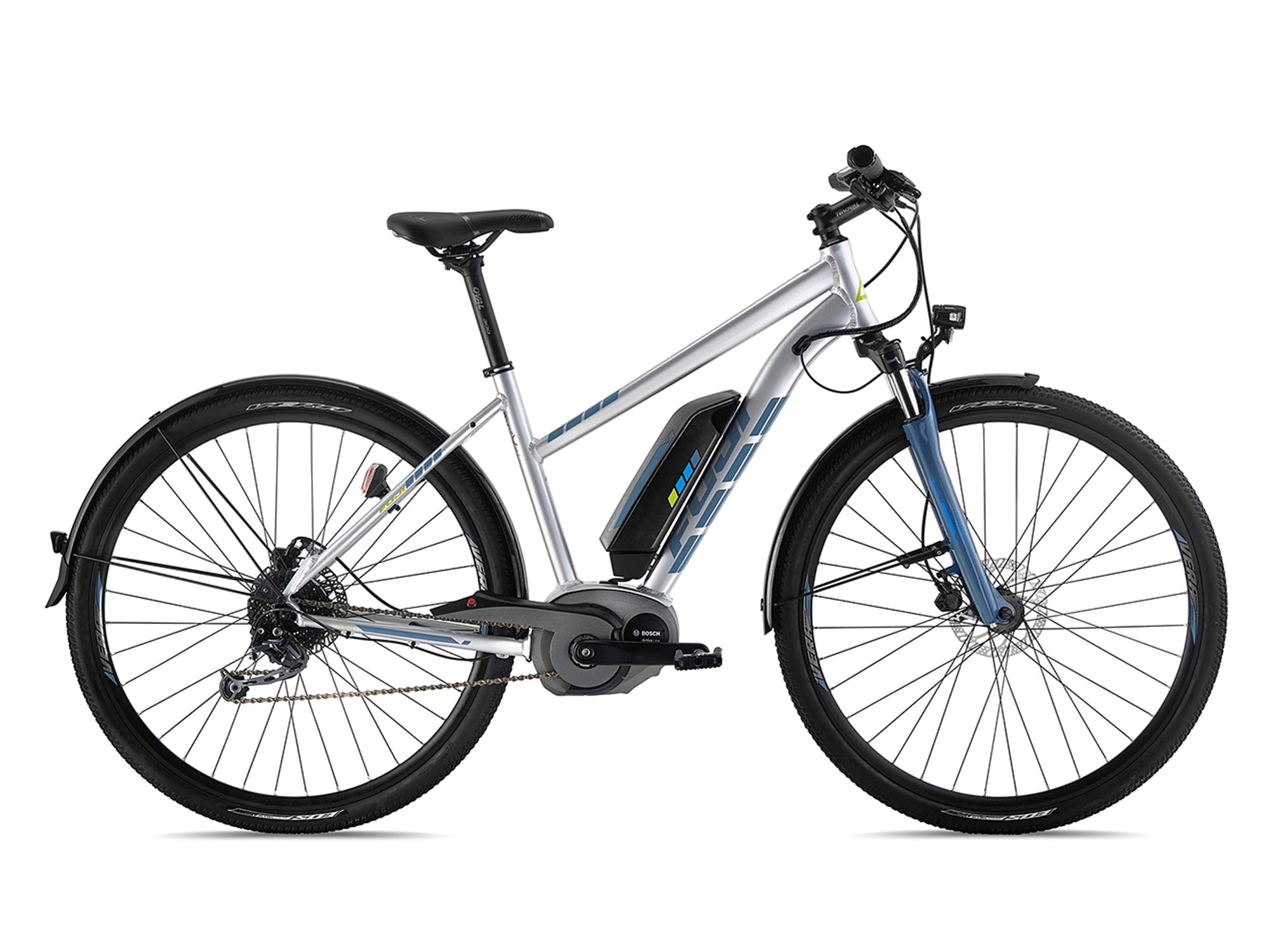

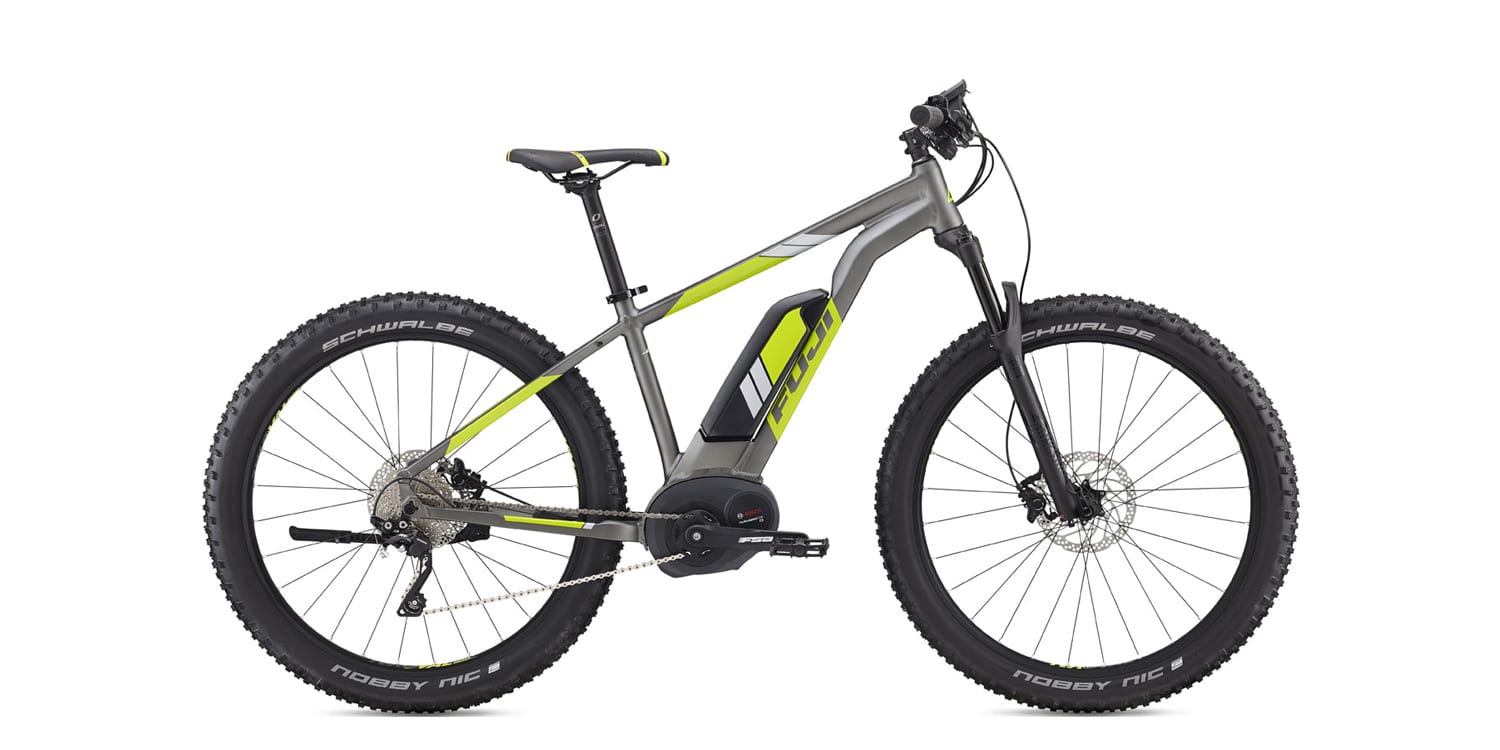

Mike says
These mid-drives seem to have pricing that is just too high. Comparable quality/spec’d ebikes with larger batteries, and very smooth, **reliable** and easily serviceable hub drives can be had for $1000 less. Just don’t see the justification. 90 mile max range ??? Seriously ? Maybe going 90 miles, all downhill with a 30 mph tailwind at your back, and a sail, with only a 100 lb rider, on level 1 assist. Lol. With a 400 powerpack no less. Call me a skeptic.
Court Rye says
Hey Mike! I try to use Bosch official range estimates but 90 does sound pretty high, right?! The thing is, their Active Line motors offer very minimal support on the lowest level of assist, so you really can go far (even as a ~160 lb ride on flat terrain with no wind, I think that’s how they measure it). So anyway, yeah, the price is higher than some of the hub motor options and you don’t get a throttle. This isn’t the world’s most exciting ebike in my opinion, but it probably would be very reliable, balanced, and efficient :)
John W McGinnis says
Just rode a Fuji E-Traverse 42 miles on one battery charge. The battery is now showing a range of 3 miles with the remaining 20% charge. The bike is dope. don’t listen to negative comments, try one. I bought the bike the day I turned 70 and I am a Cyldesdale at nearly 300 pounds. I used mixed power settings not just ECON mode and a high pedal cadence. I can now keep up with the Grandkids and my Triathelete wife.
court says
Fantastic! Sounds like you’re having a blast with the bike, John. Thanks for sharing the enthusiasm and encouragement. Hope the bike brings plenty more smiles and good times with your family :)
Gian Franco Carassale says
I’m not much into biking but I was sick of the bus + metro commute. Tried a regular bike for my 25km ride to work and back, including 10km uphill and honestly I wasn’t in shape enough to do it everyday and it took me a while. Decided to try the e-bike and literally I think its probably one of the best purchases I have ever made. I bike to work now, it takes me an hour and I do a decent amount of workout. The Etraverse from Fuji made possible something that it was not before. The bike is awesome, I need to recharge the battery everyday probably because I use it in full power as I want to shorten commute time. I tried a couple bikes before purchasing this one and I deiced on this as it behaves like a mountain bike, the motor doesn’t produce any noise and doesn’t “push you” too much but just the right amount. Mine doesn’t have integrated lights which is something I think should come standard in any bike (if if you have a large battery pack whats the point of having separate rechargeable lights?).
Court says
Sounds like you made a great choice with the Fuji! Thanks for sharing your experience, I hope the rides continue well and help you to stay in shape, get to work efficiently, and avoid the bus :D
joe says
Great Bike but I think the speed sensor is not accurate and so mileage is off. I compare the speed to various other GPS devices etc. is there a way to verify the correct wheel type is programmed etc. as pointed out, there is no place on the frame to attach a water bottle holder.
David says
Great video . I have one question. Do you have to be peddling for the motor assist or can you stop peddling and the motor will continue to move the bike forward.
Court says
Hi David! This is a Class 1 electric bike, meaning that there is no throttle. You need to pedal in order to activate the motor. In fact, this is a Bosch drive system, so it measures rear wheel speed, pedal cadence, and pedal torque to make the motor power smooth and dynamic. Some simpler ebike systems only measure pedal cadence and can feel abrupt. If you want to use an ebike more like a motorcycle, look for ones with a trigger throttle or twist throttle which are called Class 2. Here’s one that costs similar and offers both pedal assist and throttle operation.